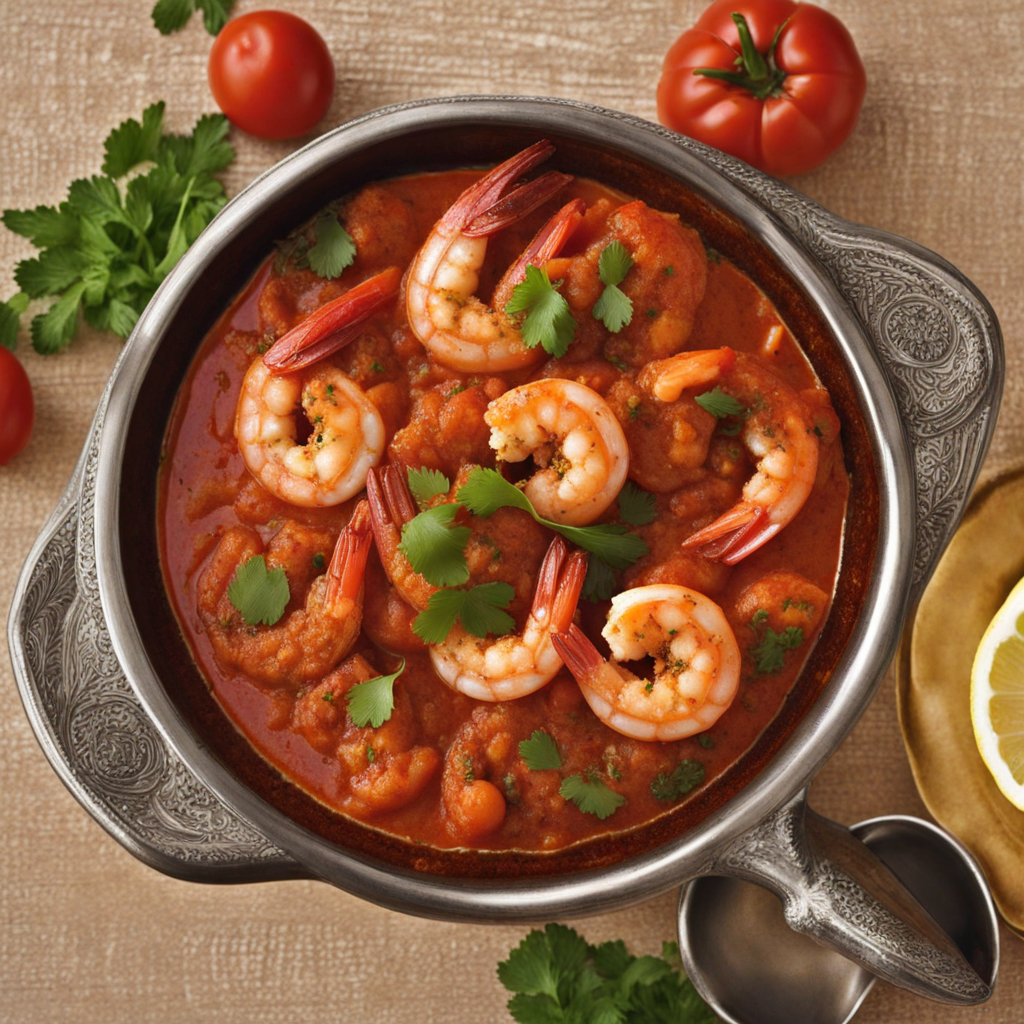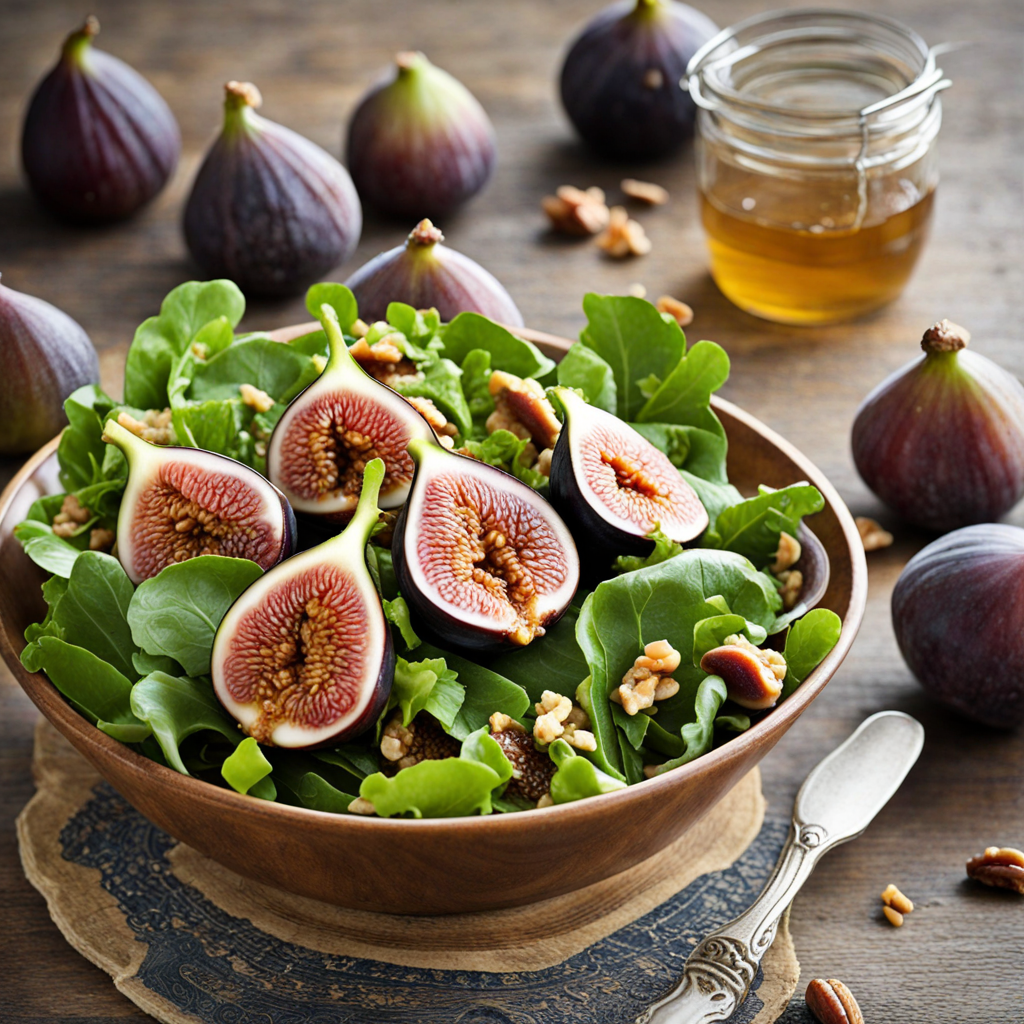Spicy Shrimp Tagine
Spicy Shrimp Tagine is a vibrant and aromatic dish that beautifully showcases the rich culinary traditions of Morocco. This tantalizing meal features succulent shrimp simmered in a fragrant sauce made with a blend of spices, including cumin, coriander, and paprika, which impart a warm and inviting flavor profile. The hallmark of a tagine is its slow-cooked preparation in a traditional earthenware pot, allowing the shrimp to absorb all the spices and create a delightful harmony of tastes that dance on the palate. The addition of tomatoes, bell peppers, and olives adds a burst of freshness and color, elevating the dish to a feast for both the eyes and the taste buds. As you dive into this dish, you'll discover the underlying heat from the spices, balanced by the sweetness of the tomatoes and the tender, juicy texture of the shrimp. The sauce is typically enriched with a splash of preserved lemon or a hint of harissa, a North African chili paste, which provides a tangy depth and a kick of heat that lingers pleasantly without overwhelming the dish. The combination of flavors creates a complex yet harmonious experience that reflects the diverse influences found in Moroccan cuisine. Spicy Shrimp Tagine is often served with warm, fluffy couscous or crusty bread, perfect for scooping up the savory sauce and shrimp. This dish is not only a culinary delight but also a celebration of the communal spirit of Moroccan dining, where sharing food with family and friends is a cherished tradition. Whether you're enjoying it at a Moroccan restaurant or trying your hand at making it at home, Spicy Shrimp Tagine promises an unforgettable journey into the heart of Morocco's vibrant food culture.
How It Became This Dish
The Spicy Shrimp Tagine: A Culinary Journey Through Morocco #### Origins The Moroccan culinary landscape is a vibrant tapestry woven from diverse cultural influences, historical narratives, and geographical blessings. Among the many iconic dishes that emerge from this rich tradition is the spicy shrimp tagine, known as "طاجين الجمبري الحار" (Tajine Jambri Al Har). This dish embodies the essence of Moroccan cuisine, characterized by its aromatic spices, fresh ingredients, and communal dining traditions. The origins of tagine, the cooking vessel from which the dish derives its name, can be traced back to ancient North Africa, where Berber tribes utilized clay pots for cooking over open flames. The word "tagine" itself refers to both the pot and the dish prepared within it. Historically, seafood was less commonly featured in Moroccan cuisine compared to lamb, chicken, or vegetables, largely due to geographical and cultural factors. However, the coastal regions of Morocco, particularly cities like Essaouira and Agadir, have a rich maritime heritage, leading to the incorporation of fresh seafood into local culinary practices. The shrimp used in this dish, particularly the large, succulent varieties found in Moroccan waters, adds a unique flavor profile that distinguishes it from other tagine recipes. The combination of shrimp with spices such as paprika, cumin, and harissa reflects the melting pot of cultures that have influenced Morocco throughout its history, including Arab, Berber, and Mediterranean traditions. #### Cultural Significance Food in Morocco is not merely sustenance; it is a key aspect of social and cultural identity. Meals are often communal, bringing families and friends together to share in the experience. The preparation and enjoyment of food are deeply rooted in Moroccan hospitality, where serving guests is a sign of respect and care. Spicy shrimp tagine is often enjoyed during special occasions, family gatherings, and festive celebrations, making it a dish that transcends everyday meals. The vibrant colors and aromatic spices create a feast for the senses, inviting diners to indulge in the flavors of Morocco. The act of sharing this dish, often served with traditional Moroccan bread, emphasizes the values of community and connection, reinforcing the idea that food is a medium through which relationships are nurtured. Moreover, the spices used in the tagine reflect the historical trade routes that passed through Morocco. Spices like saffron, cumin, and coriander were once highly coveted commodities, traded across continents. Their presence in Moroccan cuisine signifies not only the country's agricultural wealth but also its role as a hub of cultural exchange and interaction. #### Development Over Time As Morocco entered the 20th century, the country's culinary landscape began to evolve in response to globalization, urbanization, and changing social dynamics. The spicy shrimp tagine, while rooted in tradition, began to adapt to modern tastes and lifestyles. In urban centers such as Casablanca and Marrakech, restaurants started to emerge that catered to both locals and tourists. Chefs began experimenting with traditional recipes, incorporating contemporary techniques and ingredients. The spicy shrimp tagine was no exception; variations emerged that included the addition of vegetables, fruits, or even international ingredients like coconut milk, reflecting the influence of global culinary trends. The growing popularity of seafood, combined with an increasing awareness of healthy eating, led to a resurgence in the appreciation of dishes like spicy shrimp tagine. The dish's balance of flavors, combined with its nutrient-rich ingredients, made it appealing to a new generation of diners seeking both taste and health benefits. As the world became more interconnected, Moroccan cuisine found its way into international culinary scenes. Chefs from Morocco and those inspired by Moroccan flavors began to showcase dishes like spicy shrimp tagine in food festivals, cooking shows, and restaurants worldwide. This global exposure not only promoted Moroccan culinary traditions but also fostered a greater appreciation for the diversity and complexity of its flavors. #### The Contemporary Experience Today, spicy shrimp tagine is celebrated both in Morocco and beyond. Its preparation often involves a fusion of traditional methods and modern cooking techniques, allowing chefs to highlight the freshness of the ingredients while retaining the dish's authenticity. The use of fresh herbs, such as cilantro and parsley, and the incorporation of seasonal vegetables have become more prevalent, enhancing the dish's appeal and promoting sustainability. In Morocco, the experience of enjoying a spicy shrimp tagine is often accompanied by rituals that honor the culture. Diners may gather around a communal table, sharing stories and laughter as they savor each bite. The dish is commonly served with couscous or crusty bread, allowing diners to soak up the flavorful sauce, which is a hallmark of Moroccan cuisine. Moreover, the dish's adaptability has led to variations that cater to different dietary preferences, such as vegetarian or gluten-free options. This evolution emphasizes the importance of inclusivity in contemporary dining culture, allowing everyone to partake in the joy of Moroccan food. #### Conclusion The spicy shrimp tagine stands as a testament to Morocco's rich culinary heritage and its ability to adapt and thrive in a changing world. From its ancient origins in Berber cooking to its modern interpretations in urban centers and international kitchens, this dish embodies the spirit of Morocco—celebratory, communal, and deeply flavorful. As we savor this delightful dish, we are not only enjoying a meal but also partaking in a centuries-old tradition that tells the story of a nation, its people, and their enduring connection to food. Through spicy shrimp tagine, we are reminded that food is not only about taste; it is a celebration of culture, history, and the bonds that unite us across generations and borders.
You may like
Discover local flavors from Morocco







